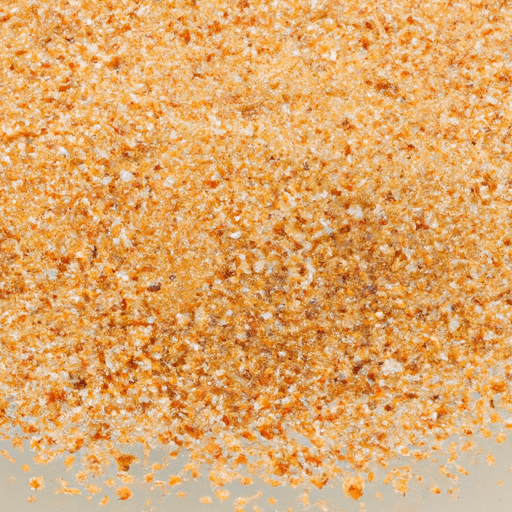Unprocessed Wheat Bran: A Nutritious and Versatile Ingredient
When it comes to wholesome ingredients, unprocessed wheat bran stands out as a nutritional powerhouse. This fiber-rich byproduct of wheat milling not only adds a nutty flavor and unique texture to your dishes but also provides a wealth of health benefits. Join us as we dive into the world of unprocessed wheat bran, exploring its taste, cooking applications, nutritional value, and fascinating history.
Taste and Texture
Unprocessed wheat bran boasts a distinctive taste that can be described as earthy, nutty, and slightly sweet. Its texture is coarse and grainy, adding a delightful crunch to a variety of recipes. While some might find its flavor to be an acquired taste, incorporating it into different dishes and recipes can help enhance its appeal.
Common Uses in Cooking
Unprocessed wheat bran has a multitude of uses in the kitchen, making it a versatile ingredient for creative cooking. Let’s take a look at some common ways to incorporate this fantastic ingredient:
1. Baking
Unprocessed wheat bran is a baker’s secret weapon, adding both texture and nutrition to baked goods. It can be used to create hearty bread, muffins, pancakes, and even cookies. When using wheat bran in baking, it’s important to combine it with other flours and moist ingredients to balance its absorbency. Experiment with different recipes to find the perfect blend for your baked treats.
2. Breakfast Cereal
Start your day on a healthy note by incorporating unprocessed wheat bran into your breakfast routine. Whether sprinkled over yogurt, mixed into granola, or enjoyed as a standalone cereal, it adds a satisfying crunch while providing a wholesome source of fiber.
3. Smoothies and Shakes
Boost the nutritional value of your favorite smoothies and shakes by adding a tablespoon or two of unprocessed wheat bran. Not only does it enhance the thickness and texture of your drink, but it also increases the fiber content, keeping you feeling full and satisfied.
4. Coatings and Fillers
Unprocessed wheat bran can serve as a flavorful coating for chicken, fish, or vegetables, adding a hint of crunch and enhancing the overall taste. It can also be used as a filler in meatloaf, meatballs, or veggie patties, helping retain moisture while providing added nutrition.
Nutritional Value
Unprocessed wheat bran is not only tasty but also incredibly nutritious. Just a quarter-cup serving of this ingredient provides a range of essential nutrients:
- Fiber: Unprocessed wheat bran is an excellent source of dietary fiber, supporting digestive health and regulating blood sugar levels.
- Vitamins and Minerals: It contains significant amounts of B vitamins, vitamin E, iron, magnesium, and zinc, contributing to overall wellness.
- Antioxidants: Wheat bran is rich in antioxidants, which help combat inflammation and oxidative stress in the body.
Historical Significance
Unprocessed wheat bran has been utilized for centuries across various cultures. In ancient times, it was a staple in the diets of Egyptians and Greeks, known for its myriad of health benefits. Over time, its popularity spread, and it became a commonly used ingredient in baked goods and cereals worldwide.
Fun Facts
- Unprocessed wheat bran is the outer husk of the wheat grain, which is typically removed during milling and refining processes.
- It is a natural and sustainable byproduct, using a part of the grain that would otherwise go to waste.
- The United States is one of the leading producers of wheat bran, owing to its extensive wheat cultivation.
Conclusion
Unprocessed wheat bran undoubtedly deserves a place in your pantry. Its unique taste, versatility in cooking, exceptional nutritional value, and rich history make it a standout ingredient. Whether you sprinkle it on top of yogurt, blend it into your morning smoothie, or use it as an ingredient in baking, unprocessed wheat bran adds both flavor and health benefits to your meals. Embrace this nutrient-dense powerhouse and elevate your culinary creations to a whole new level!
So, why wait? Give unprocessed wheat bran a try and unlock a world of delicious possibilities in your kitchen.
Disclaimer: Consult with a healthcare professional if you have any underlying health conditions or dietary restrictions before incorporating unprocessed wheat bran into your diet.
Origin: Unprocessed wheat bran is derived from the outer layer of the wheat kernel, known as the bran. It is obtained during the milling process of wheat to produce flour.
Common uses: Unprocessed wheat bran is commonly used as a dietary supplement, especially in the baking industry. It is often added to baked goods, cereals, and granola bars to increase their fiber content and improve texture.
Nutritional benefits: Unprocessed wheat bran is a good source of dietary fiber, particularly insoluble fiber. It is rich in cellulose, hemicellulose, and lignin, which can help promote regular bowel movements and improve digestion. Additionally, it contains minerals such as magnesium, iron, and zinc, along with B vitamins.
Unique properties: One unique property of unprocessed wheat bran is its ability to absorb water. When added to recipes, it can absorb and hold moisture, potentially leading to increased moisture and tenderness in baked goods. It also has a slightly nutty flavor, which can enhance the taste of certain dishes.
Historical significance: Historically, wheat bran was often discarded during the milling process, as it was considered a byproduct. However, with the growing awareness of the nutritional benefits of bran, it has gained popularity as a dietary supplement and ingredient in various recipes. Today, it is widely recognized as a valuable source of fiber and nutrients.




Use the share button below if you liked it.
It makes me smile, when I see it.